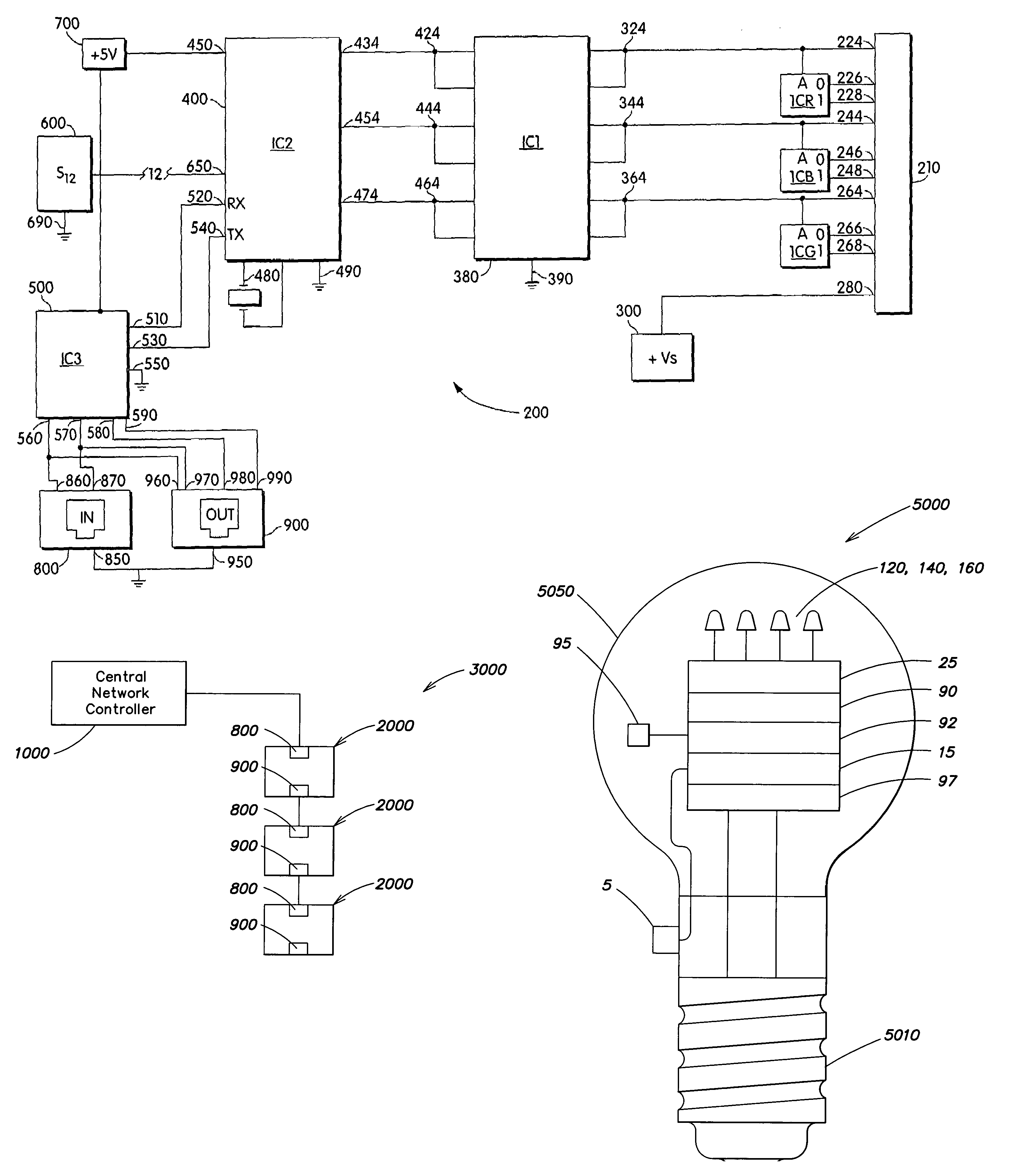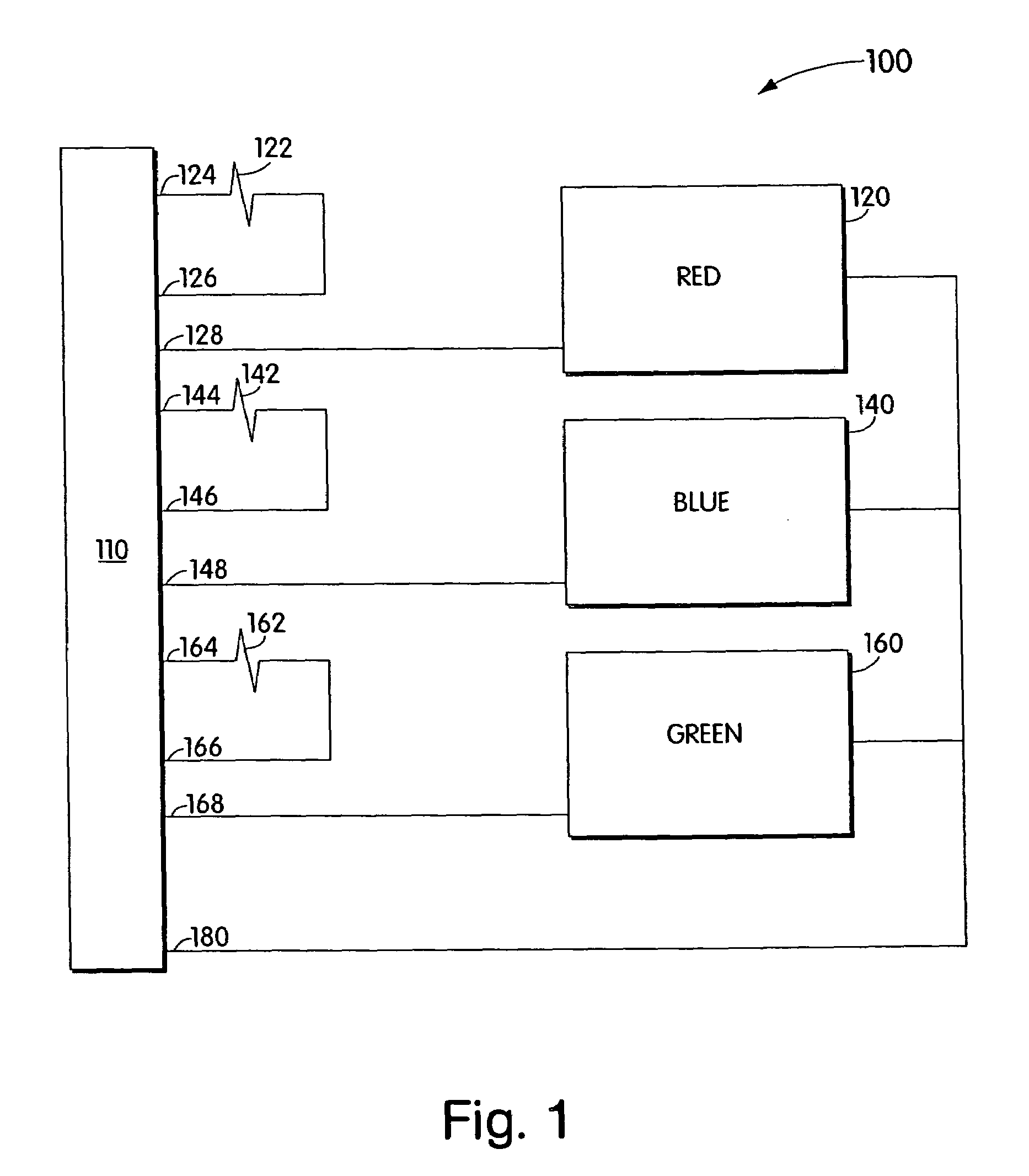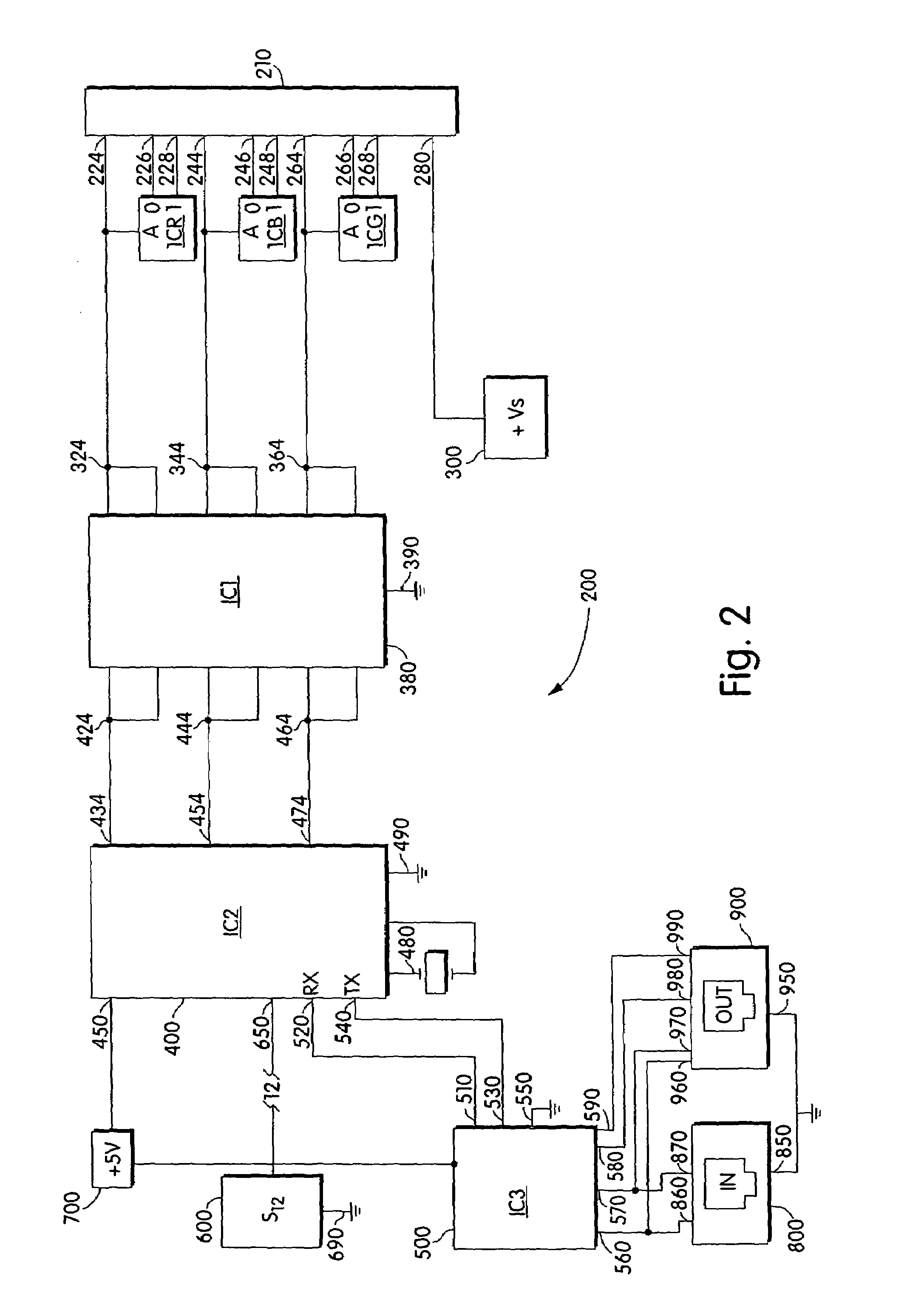Multicolored LED lighting method and apparatus
a multi-colored led and light source technology, applied in lighting applications, lighting and heating apparatus, instruments, etc., can solve the problems of inefficient transistor biasing, inability to change the bias of all three led transistors independently and simultaneously, and the apparatus has several disadvantages and limitations, so as to achieve simple visual inspection and facilitate reading.
- Summary
- Abstract
- Description
- Claims
- Application Information
AI Technical Summary
Benefits of technology
Problems solved by technology
Method used
Image
Examples
Embodiment Construction
[0027]The structure and operation of a preferred embodiment will now be described. It should be understood that many other ways of practicing the inventions herein are available, and the embodiments described herein are exemplary and not limiting. Turning to FIG. 1, shown is an electrical schematic representation of a light module 100 of the present invention. FIGS. 4 and 5 show the LED-containing side and the electrical connector side of light module 100. Light module 100 is self-contained, and is configured to be a standard item interchangeable with any similarly constructed light module. Light module 100 contains a ten-pin electrical connector 110 of the general type. In this embodiment, the connector 110 contains male pins adapted to fit into a complementary ten-pin connector female assembly, to be described below. Pin 180 is the power supply. A source of DC electrical potential enters module 100 on pin 180. Pin 180 is electrically connected to the anode end of light emitting di...
PUM
 Login to View More
Login to View More Abstract
Description
Claims
Application Information
 Login to View More
Login to View More - R&D
- Intellectual Property
- Life Sciences
- Materials
- Tech Scout
- Unparalleled Data Quality
- Higher Quality Content
- 60% Fewer Hallucinations
Browse by: Latest US Patents, China's latest patents, Technical Efficacy Thesaurus, Application Domain, Technology Topic, Popular Technical Reports.
© 2025 PatSnap. All rights reserved.Legal|Privacy policy|Modern Slavery Act Transparency Statement|Sitemap|About US| Contact US: help@patsnap.com



